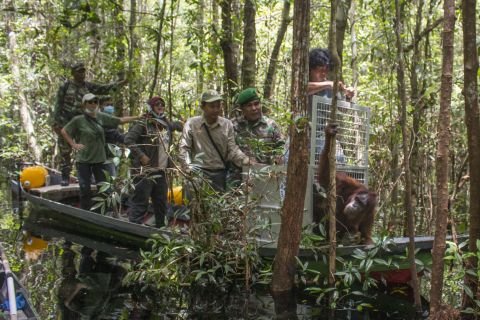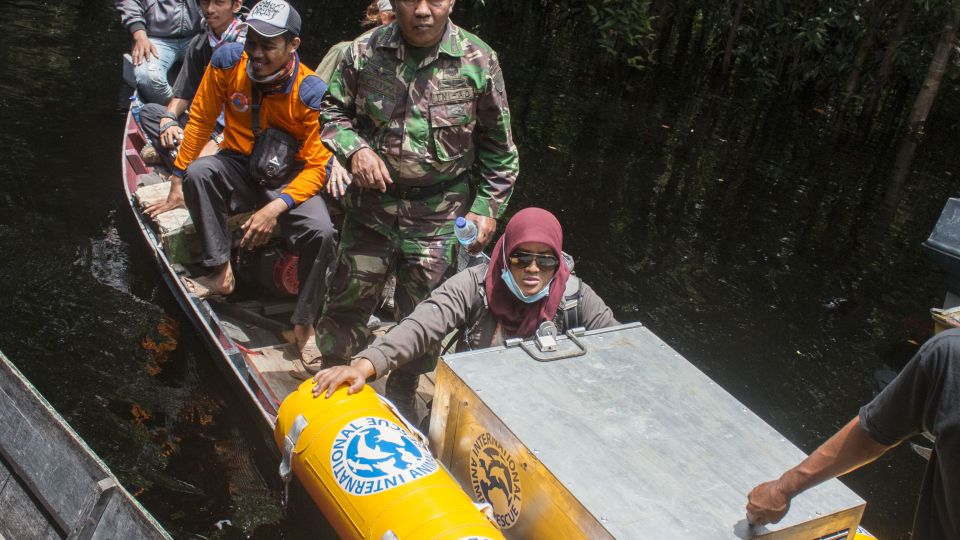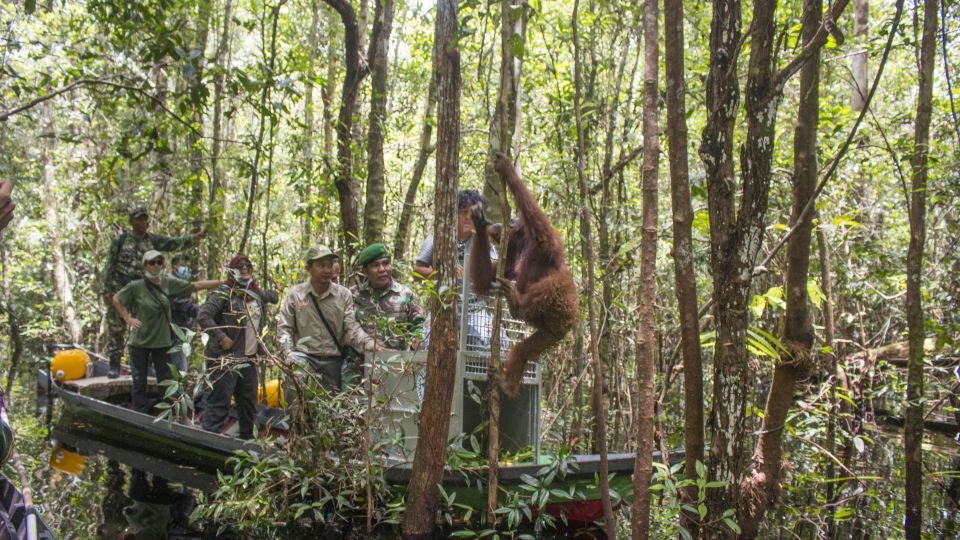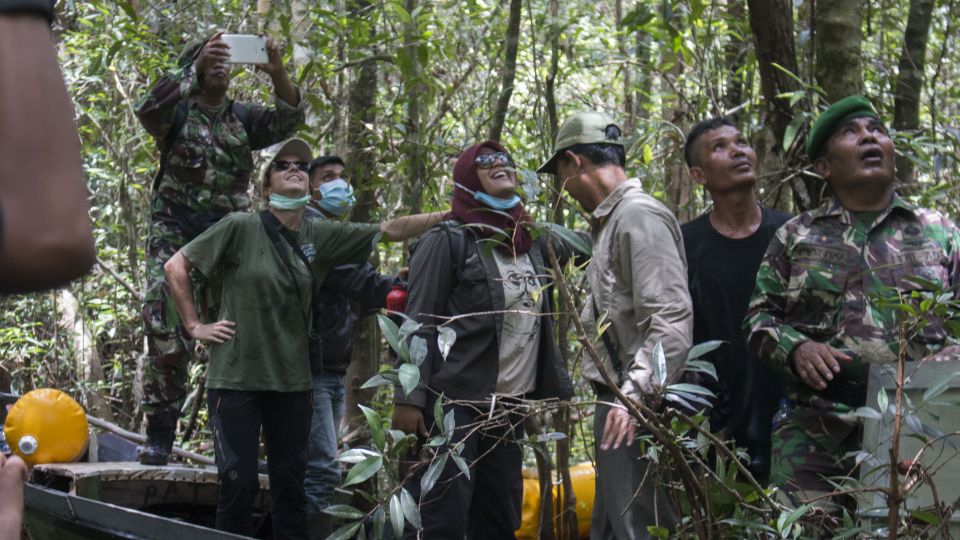
In collaboration with the Conservation of Natural Resources (BKSDA), the Military District Command and the local Institute of Forest Management in Ketapang, West Kalimantan, IAR’s team in Indonesia has released a female orangutan back into the wild in Pematang Gadung, South Matan Hilir Subdistrict, Ketapang.
Also present at the release was the City District Military Commander of Matan Hilir South, demonstrating the commitment and support of the military for conservation.
“We’re highly supportive of the release of this orangutan in the forest village of Pematang Gadung. As a state institution in the area of Ketapang, by participating in these activities we are helping to preserve the environment for the benefit of the community and protecting orangutans which are a precious asset in Ketapang,” said Lt Col Rico Haryanto, commander of the Military District 1203/Ketapang.

The orangutan named Reva was rescued from paddy fields on January 15, 2017. She was in a very bad state when she was found by a joint team from BKSDA Ketapang and IAR Indonesia. Her hands and her ankles were bound and her body was covered in injuries.
“Reva’s condition was critical. Her hands and ankles were swollen from being bound for a long time,” said vet Ayu Budi Handayani, IAR Indonesia’s Manager of Animal Care who tended to Reva out in the field. “When viewed more closely, it was clear that the orangutan had suffered a lot of injuries to her body.
IAR’s medical team gave the orangutan intravenous fluids and anti-inflammatory injections. Then they transported her to IAR’s Orangutan Rescue Centre in Sungai Awan, Ketapang.
While Reva was in intensive care, the veterinary team carried out a more thorough examination and took x-rays. These revealed that the orangutan had been shot several times with an air rifle. The x-ray results showed pellets in the back of her left hip, right thigh, neck, back, right wrist and middle finger.
In spite of all her injuries, after six weeks’ intensive treatment, Reva had made a good recovery and was deemed ready to be returned to the wild.
“Reva’s condition at this time is good. Her wounds have healed and her stress level from the trauma she suffered has been significantly reduced,” Ayu explained. “Her behaviour is also still wild so we’re sure she’ll do well back in her natural habitat,” she added.

The orangutan’s release was greeted positively by the residents of the village of Pematang Gadung. They were all very excited to see Reva returning to her natural habitat. Indeed, they had requested that Reva be released into the Pematang Gadung Forest. Abadi, Chairman of the local Institute of Forest Management, expressed support for the release of the orangutan “We welcome and strongly support the release of this orangutan,” he said.
“Hopefully these activities will further strengthen the relationship between the village authorities and IAR Indonesia. As we know, the orangutan is a protected species that only exists in two countries in the world, on two islands in Indonesia, and Pematang Gadung is one area where wild orangutans live. In light of this privilege, we expect support from the government and various stakeholders to develop the potential we have, such as ecotourism for example,” he added.

The Pematang Gadung forest is home to a variety of wildlife populations. The results of a survey carried out by IAR’s team in 2012 revealed that it is home to about 500 orangutans. With such high biodiversity, the forest is predicted to become a tourist destination for ecological study.
Ecotourism has a crucial role to play in the protection and conservation of orangutans.
“Ecotourism is a way of improving the local economy. We are protecting wildlife and the environment for its own sake, but also to help the community derive some economic value from it,” explained Erik Somala, Staff Community Development Officer for IAR Indonesia. “As part of our work with local villagers, we have also formed village forest patrol teams whose task is to prevent any activities that could threaten local wildlife or ecosystems in the area,” he concluded.

